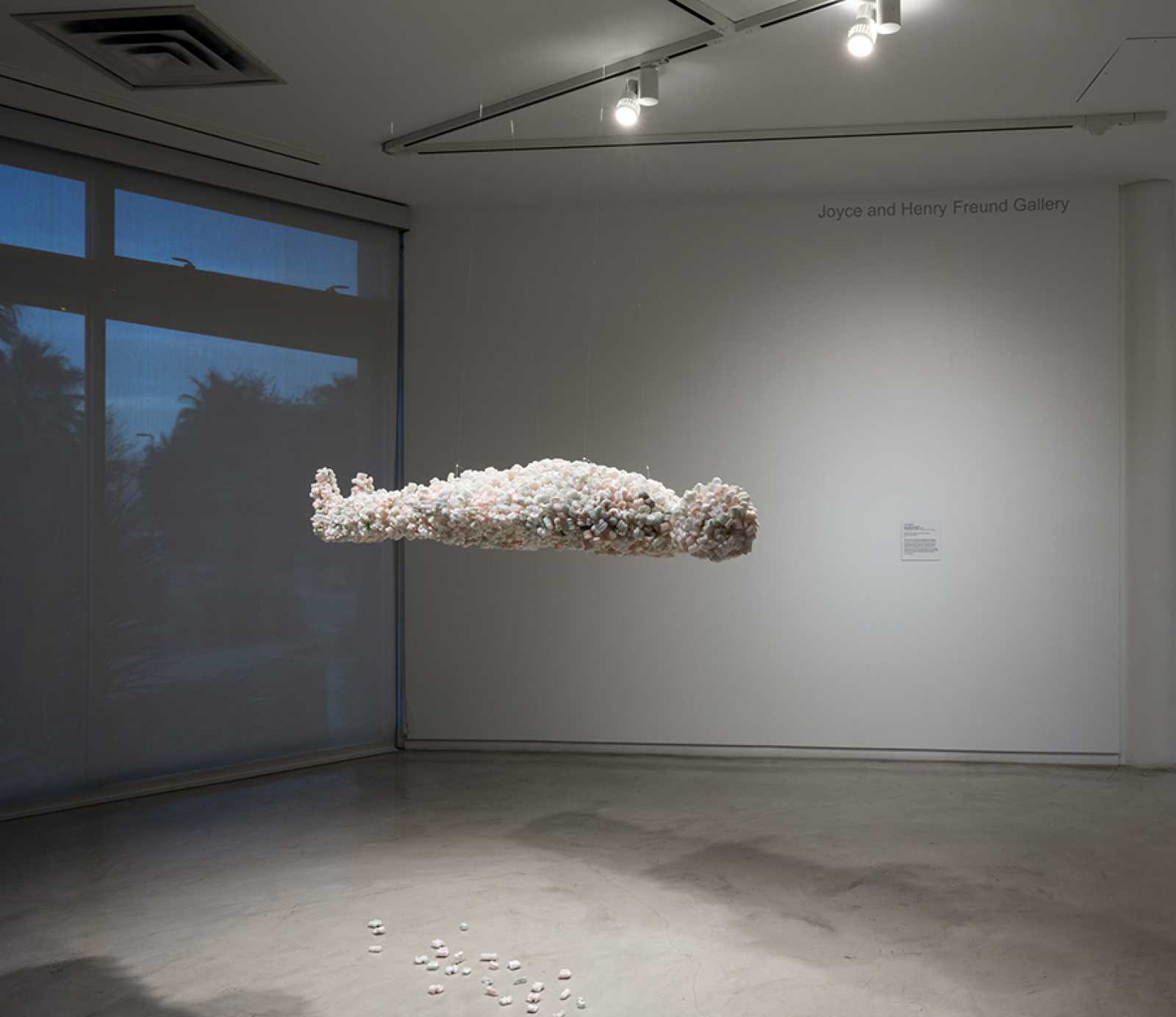Artwork of the Week
Tom Friedman
Throughout his career, Tom Friedman has been creating meticulously rendered drawings and whimsical sculptures that inhabit the boundary between reality and illusion. Inspired by elements from his surroundings and from the world at large, Friedman demonstrates a remarkable level of observation, careful attention to detail, and extraordinary handling of materials. His work continually asks us to consider what we see—and our experience of perception is informed by looking closely.
In Packing Peanuts Figure, the artist uses the common Styrofoam packing material to construct a 21st-century homage to the body—one of the most enduring artistic subjects. The figure’s supine pose with arms and legs locked stiffly at its side is reminiscent of a bound mummy preserved for eternity. The handful of packing peanuts scattered on the floor beneath the sculpture, however, suggests that this form is slowly disintegrating, belying the initial impression that it is rigid and unchanging. The figure’s weight is confounded by its position floating at eye level; the sculpture seems to levitate, emphasizing the lightness of its materials. These and other contradictions are at the heart of Friedman’s conceptually rigorous and intricately crafted works.
Tom Friedman (American, born 1965), Packing Peanuts Figure, 2007, packing foam peanuts, monofilament and glue, 12 x 67 x 22 inches. Museum purchase with funds provided by Donna J. MacMillan, 2017.17.
Hayward Ellis King
Hayward Ellis King was a mid-20th century leader in the flourishing San Francisco arts community. Born in Little Rock, Arkansas, King grew up in Pasadena and enrolled in the arts program at the California School of Fine Arts (later renamed San Francisco Art Institute). After serving in the Korean War, King returned to the Bay Area. He would become a significant voice in the arts community by co-founding, with friends Deborah Remington and David Simpson among others, the legendary Six Gallery, a multimedia hub for the Beat Generation. He was one of the first African Americans to hold prominent positions in arts administration in the region, most notably at the progressive Richmond Art Center in the East Bay.
King worked primarily with print media and collage, usually in black and white and incorporating xerography, drawing, and clippings. He also made abstract oil paintings, such as this energetic composition. In this colorful canvas, King’s brushwork constructs a landscape of impasto forms. His work takes some influence from artists with whom he often collaborated, such as Beat poets and jazz musicians, whose experimental rhythms parallel King’s irregular compositions.
Hayward Ellis King (American, 1928 – 1990), Abstract, 1956, oil on canvas, 22 × 28 inches. Collection of Donald Osborne and Frank Garofolo, L2019.11


